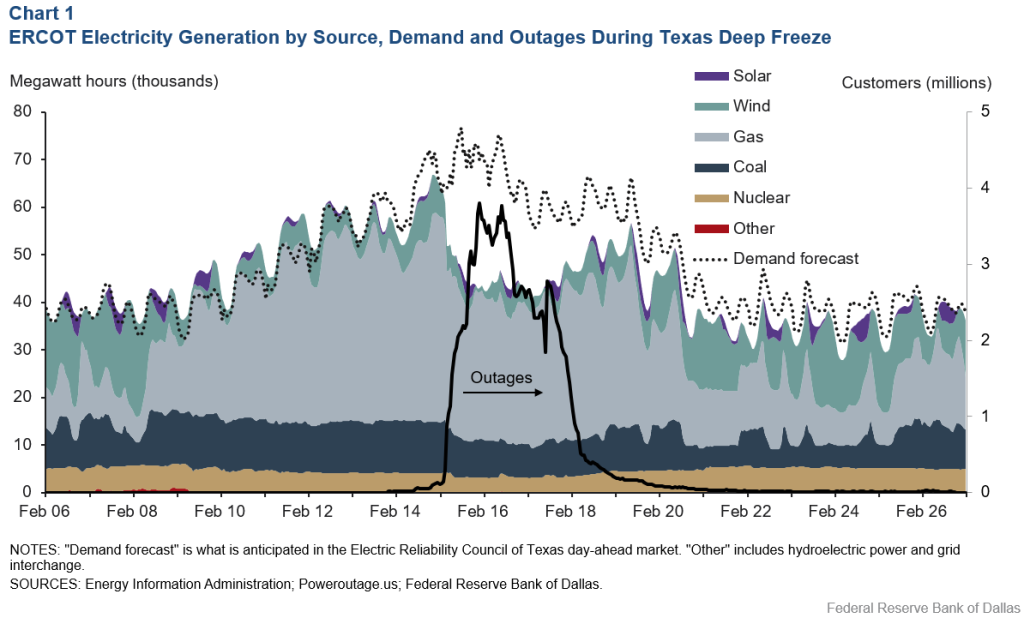by Angelos Kokkinos – Associated Deputy Assistant Secretary (ret.), United States Department of Energy
A new New England winter season is upon us and we are all proceeding merrily along thinking that one of the most important needs – electricity – will be here to keep us warm, do our laundry, help us cook and deliver the water we drink. It may be here to let us drive our brand electric vehicle that we bought partially paid with a contribution from our fellow citizens. Indeed, we’ve survived the monster snowfall of ’78, the Polar Vortex of 2015, and the Bomb Cyclone of Christmas of 2017. We are indestructible.
 The reality of this winter is significantly different than what it was as recently as five years ago. We have a perfect storm developing.
The reality of this winter is significantly different than what it was as recently as five years ago. We have a perfect storm developing.
Our “solons” on Beacon Hill, in their quest to fight climate change, passed legislation requiring electrically driven heat pumps to heat our homes instead of taking a good look at how we prepare for the upcoming winter. Did they actually think about the impact of this type of legislation on our poor citizens? Instead they followed the advice of the former Commonwealth Undersecretary for Climate Change, David Ismay, that talked of the need to “break the back of the consumers” as the offering to the altar of fighting climate change? This legislation will put at risk the reliability of our electrical grid, make our electricity prices go even higher than what they are (4th highest in US), cost the taxpayers money, and most importantly, put our welfare at risk.
The current war in the Ukraine with the associated energy shortages in Europe, along with the tremendous increase in gasoline and diesel (heating oil) prices and rationing, serve as a warning that if we have a cold winter, it will have, at a minimum, a serious impact to our wallets (diesel prices are at $5.516 or up 66.6% from a year ago, with reserves at their lowest level since 2008), and at its worst, result in blackouts similar to those in Texas in February 2021. The people living in New England are being told by their politicians and the environmental movement that they should be patient, as going to a 100% renewable power generation would result in reliable electricity and a reduction in our costs. They are seriously wrong on both accounts.

Photo Courtesy Reuters
Electric power touches every part of our everyday lives. Electricity has become as critical to our survival as food, water and shelter. Intermittent renewable energy (wind and solar) by definition cannot provide reliable and resilient electricity. It requires what is called “backup” power. This is power that is provided by, “firm power”, that in New England, are mainly natural gas fired and the two nuclear power plants in Seabrook, NH and Millstone, CT.
Events in Germany and Texas are great recent examples of how having large amounts of intermittent renewable energy is neither low cost nor does it provide reliable on demand power. “Firm” power backup is required, which only fossil, hydro and nuclear fuels can provide. Germany has over 120 gigawatts (GW) of installed renewable (wind and solar) electric capacity providing 150% of its maximum daily electricity needs. Yet when the war in Ukraine broke out and there was an interruption of natural gas and fuel oil (backup power), Germany brought back to service its indigenous coal fired power plants as the renewable sources are not reliable. The Germans are going as far as demolishing wind turbines so they can open one of the old coal mines!
Texas blackouts in February 2021 provide us with a great example of what can happen when you depend almost exclusively on renewables for you power. This was not a 1 in 100 years weather event – it happened in Texas before in 1983, 1989 and 2011. The following figure shows that the over dependence of the grid on renewable energy significantly contributed to massive blackouts, causing over 200 deaths and $80 to $130 billion in damage to the economy.

Texas has the largest installed wind power capacity in the US at nearly 35 GW. The left-hand vertical axis of the Figure shows the power demand, while the right-hand axis shows the number of customers receiving power. As the Figure shows the peak demand at the time of this winter event was about 70 GW. On late February 7 at about 11 PM, wind was providing (green area) 23 GW or about half of the power demand. Less than 24 hours later on February 8th, wind dies down and with the temperatures freezing the wind turbines, wind was only supplying the grid with 5 GW, so natural gas and coal sources had to increase their load to pick up the lost 20 GW or so of wind power. Coal (black) went to 100% of its capacity, while natural gas (light gray) picked up the rest of the demand. Six or so hours later in the early hours February 9th wind really died down to less than 1 GW or less than 5% of its capacity, so natural gas came to the rescue of the grid by increasing its production of electricity and while coal was still chugged along at 100% capacity. On February 15th the natural gas capacity of the system reached its peak, straining the gas supply system. To prevent damage, several events took place resulting in a significant reduction in natural gas capacity: 1) gas was curtailed to industrial sources so the people could heat their homes resulting in gas units went off line due to lack of fuel supply, 2) there was a reduction in frequency due to high demand and low power supply resulting to two coal units going off line to protect the equipment, 3) a nuclear (gold) unit was briefly lost due to equipment problems and 4) loss of natural gas compressors as they lost power or froze further reducing natural gas supply. As a result, we see a significant customers losing power (black line).
 The events that happened in Texas last year and those that are happening in Germany now, are a scary warning of what can happen in New England as a result of regulations like those passed regarding heat pumps.
The events that happened in Texas last year and those that are happening in Germany now, are a scary warning of what can happen in New England as a result of regulations like those passed regarding heat pumps.
New England states’ peak demand is a little over 24 GW and is expected to increase to over 25 GW in ten years and that was before the passing of the “heat pump” legislation. Most of our firm power generators use natural gas with diesel oil as a backup. Our natural gas supply is limited, as the pipelines bringing gas to our state have not been upgraded in decades and only pass a certain volume. Think of it as your garden water hose – you can only pass amount of water. In very cold weather our first priority is to protect our citizens so the gas supply is curtailed to industrial sites and power plants. Our legislators should have the experts as to where this extra power for the half million home heat pumps would come from. They went ahead and waved their magic wand by legislating the addition 5.6 GW of offshore wind by 2027 thinking that is the answer– when did you see a first of its kind project for us become a reality in five years – Big Dig anyone?
Let’s look at some of the numbers using back of the envelope calculations on the impact of the proposed heat pumps. To be sure, heat pumps are the most efficient way to heat and air condition a home using electricity as fuel, provided that they are properly designed for cold New England weather (e.g., air source heat pumps) and as long as the house is properly insulated and air sealed.
An average heat pump installed on a 3-to-4-bedroom older home will use between 9 to 16 kW of power. Let’s be optimistic and say it will need an average of 10 kW, meaning that the state will need an additional 5 GW of extra power we don’t have. Nor can we import it as we do not have power line capacity. Even if we get the off shore wind completed on time and under budget, we will need to install at least a third of that capacity (2 GW) new gas fired power to back up this new wind power, so we have electricity on days when the wind is not blowing or it is too cold to run the wind turbines. Of course, for these new gas power plants, we will need to build gas pipelines to get the gas here from Pennsylvania and West Virginia. Of course we will have to deal with New York and our save the earth friends to let us do so.
 In the meantime, the natural gas electricity producers see, with passing of this law, that the Commonwealth is favoring renewable energy, so they will be shutting down their gas plants and will not be buying oil to use as backup to natural gas, when gas is curtailed during very cold days as it happened during Christmas of 2017. As of December 1 the stored diesel oil available for power according to New England Independent Operator (NEISO) was 45% (2.5 million barrels) of the total capacity available. In comparison during the Bomb Cyclone event of Christmas week 2017, the stored oil was at 70% of 4 million barrels. During that event, that lasted one week, we consumed half of that reserve. Imagine if we had a similar event this year. If it lasts a week, with temperatures in the low teens, we will have less than half a million barrels of back up fuel oil and we will be facing rotating black outs!
In the meantime, the natural gas electricity producers see, with passing of this law, that the Commonwealth is favoring renewable energy, so they will be shutting down their gas plants and will not be buying oil to use as backup to natural gas, when gas is curtailed during very cold days as it happened during Christmas of 2017. As of December 1 the stored diesel oil available for power according to New England Independent Operator (NEISO) was 45% (2.5 million barrels) of the total capacity available. In comparison during the Bomb Cyclone event of Christmas week 2017, the stored oil was at 70% of 4 million barrels. During that event, that lasted one week, we consumed half of that reserve. Imagine if we had a similar event this year. If it lasts a week, with temperatures in the low teens, we will have less than half a million barrels of back up fuel oil and we will be facing rotating black outs!
Our elected representatives need to tell us the truth and not mess with something as basic to our human needs as electricity. We all want to provide our children and grandchildren with a better world than that we have found. Electricity is critical to our daily lives, as important as food, water and shelter so we need to ensure that we have adequate and reliable supply. This law will not make a dent in reducing greenhouse gas emissions and in combating climate change.
So are there solutions? Should we go and start building houses in higher ground, should we live off the grid in the Nevada desert, or start thinking about colonizing the moon Titan? No – technology exists that could help us maintain and improve our current standard of living, while at the same time help fight climate change. Stay tuned. The answer in my next article.
Angelos Kokkinos is retired from the U.S. Department of Energy where he was Director of Research and Associate Deputy Assistant Secretary for Advanced Fossil Technologies and Carbon Management in the Obama, Trump and Biden administrations. Prior to joining the government, he was CTO of Babcock Power Inc., of Danvers MA, a major supplier of fossil and concentrated solar power generation and environmental control systems and was Chief Engineer of the Ivanpah Solar Power plant steam generators. He is the holder of six U.S. Patents and the 2019 Pennsylvania State University Distinguished Achievement Award recipient in Fuel Science and Energy Engineering. He calls the Greater Lowell his adapted home since he migrated to the U.S. in 1970. He has a B.S. in Chemical Engineering from UMass Lowell and a M.S. in Fuel Science from The Pennsylvania State University. He is an expert in power plant, environmental controls, and carbon dioxide emissions capture and storage systems, design and operation.













6 responses to “Why Lowell & New England Need Fossil Fuels”
What an incredible and informative eye opener. This is the kind of input which is shunned by the general media, intent upon only spewing the acceptable party line, rather than providing objective facts. Thank you for posting this.
Outstanding! Thank you, hopefully people will pay attention and stop with the panic that we have to stop using gas and oil now!
I remember listening to Mr. Kokkinos on Teddy’s CAP show doing a very long interview that I wished I had on tape. Everyone has opinions, but very few have the understanding and depth of knowledge on energy issues that this man has. Thank you.
I am a grandma and retired librarian who is deep into reports on fossil fuel from all parts of the country. This article would be flagged as likely from a fossil fuel sponsored entity since it contains several mistakes to make a point. And the credentials of the author make it that much more authoritative. The 2 most glaring facts are that Mass is requiring heat pumps. It is presented such that enforcers will be coming to homes and demanding that homeowners put in heat pumps. This is ridiculous. The other glaring mistake is not mentioning that the Texas grid failed because it wasn’t winterized – to save money. Clearly wind power works in the winter – as demonstrated in Norway.
I don’t fault the average person for believing this report since it is part of a billion dollar PR machine from the fossil fuel companies. They are taking pages out of the PR manual that tobacco used successfully for decades. The fossil fuel companies are in their death throes and are doing everything in their power to stay alive.
Another point brought up in this report is the effect these decisions will have on our grandchildren. It is with them in my mind and heart that I now wholeheartedly support weaning ourselves off of fossil fuel. I didn’t do this lightly. I understand the intermediate upheavals it will likely cause but I take comfort in our response to WW2. When Japan bombed us we knew immediately we needed to respond. Even though we were in a Depression, had no standing army to speak of, no cache of arms, tanks or uniforms and much of our navy was under Pearl Harbor. Yet somehow with all that against us we are speaking English today and not Japanese (or German). I think we can do it again.
Appreciate your comments but as the author of the article I would like point out a few things. First as I mentioned in the podcast, I have never ever worked for any fossil fuel producing or marketing company nor was I paid by them to write the article. Secondly you mention that you care about your grandchildren – do you realize that 7–10-year-old kids are used to mine the cobalt in the D.R. of Congo for the Lithium-ion batteries that’s in the electric cars, your laptop and your iPhone/Samsung or to back up the intermittent renewable power? Thirdly, do you know that 95+% of Norway’s power is produced is hydroelectric not wind? Fourthly, you know that a major reason we won WWII was because we had fossil fuels fueling our tanks, ships, and airplanes, and Germany and Japan did not? We also had steel factories to make the armaments/ships/tanks/airplanes we needed. Do you know that it is chemically impossible to make steel without coal? Do you know that over 40% of our municipal water supply systems use anthracite coal in their purification process? Do you know that 99.9% of our pharmaceuticals are made using petroleum? If fossil fuels were so bad why has our life expectancy almost double since their introduction? We all should have been dead by now! The world prior to them was based on renewable energy (hydro, solar, wind, wood and whales) and life expectancy was less than 50 years. We have the proven technologies to do it again and capture and safely store all of the greenhouse gases that fossil fuels make. You need to see the Michael Moore documentary entitled “Planet of the Humans” and then you will understand why we are using these technologies.
Thank you for taking the time to write this. Some of this I did not know. The whole system is a mess that favors the wealthy. It is evil we rely on child slaves for such key needs. But we are simply running out of fossil fuels and their continued use is a disaster for the next generation. This is not to excuse our evil misuse of labor. But we must not let this paralyze us and not work to make solutions that help everyone. This truly a wicked problem but we still have some time. With respect to my statement about Big Oil PR – I believe you are not connected with them but you are using work from their playbook. You sound very well informed on many things but are missing the ultimate bottom line – we need to wean ourselves asap off oil and gas. This process will be painful as hell but to delay is a death sentence for our children.